- Home
- Tom Clancy
Airborne: A Guided Tour of an Airborne Task Force Page 3
Airborne: A Guided Tour of an Airborne Task Force Read online
Page 3
A portrait of General Billy Mitchell, the father of American Airpower.
OFFICIAL U.S. AIR FORCE PHOTO
While an excellent start, these early airliners still failed to meet the real requirements of commercial airlines. Slow speeds, low ceiling limits, short range, and small payloads were just a few of the aircraft limitations that commercial operators felt had to be overcome to make aviation a viable industry. The breakthrough came in the form of two new designs from builders who should be familiar to almost any aviation enthusiast: the Boeing and Douglas Aircraft companies. At the time, these West Coast companies were pale shadows of their current corporate structures. In the 1930s, these two upstart manufacturers changed the world forever with their new ideas for large transport aircraft. The first new design, the Boeing Model 247D, appeared in 1933, and was the model that every modern transport aircraft would follow in the future. Features like all-metal construction, retractable landing gear, and a top speed of over 200 kn/381 kph made the 247D an overnight success for United Airlines, which had ordered the first sixty produced.
With the Boeing production line completely saturated by orders from United, other airlines like American and TWA turned to Douglas, in Long Beach, California, to build a competitor. From this came the famous “DC” series of commercial transports, which would continue through the jumbo jets of today. The original Douglas design, the DC-1, was a significant improvement over the 247D, with better speed, range, and passenger room. Then, in 1935, Douglas came up with the classic piston-engined transport airlift aircraft of all time: the DC-3. DC-3s would be built in larger numbers than any other transport aircraft in history, quickly becoming the backbone of the growing airline industry. By 1938, over eighty percent of American airline traffic was being carried by DC-3s. Additionally, DC-3s were license-built all over the world, even in the Soviet Union (as the Lisunov LI-2) and Imperial Japan (as the L2D Tabby).
Thus, when World War II came, the DC-3 naturally donned war paint and became the C-47 Dakota.2 The Dakota served in the air forces of dozens of nations, with some 9,123 being built in the U.S. In fact, the large Army Air Force/Royal Air Force fleet of C-47s was one of the major factors that made the invasion of Europe possible. By being able to move large numbers of personnel, equipment, and supplies efficiently and safely by air, the Allied forces in 1944 had a level of operational mobility and agility that remains a model even today. All because of a simple, basic transport aircraft with two good engines, a highly stable flying design, and a structure that was practically indestructible. By way of example, the DC-3 hanging in the National Air and Space Museum in Washington, D.C., has more than 56,700 flying hours, and was retired in 1952! Other DC-3/C-47 airframes have served even longer. Some updated versions, equipped with everything from turboprop engines to GPS satellite navigation systems, are still going strong today, more than sixty years after coming off the production line.
What made aircraft like the 247D and DC-3 so revolutionary in their day was the integration of a number of new and emerging technologies. Technologically they had more in common with today’s jumbo jets than they do with the wood-and-canvas contraptions that had come before them. Their technical innovations included flush riveting, monocoque construction, turbo-supercharged radial engines, pressurized cabins, radios, and the first generation of modern aerial navigation instruments. These aircraft represented a technical Rubicon which, once crossed, could make commercial air transportation as viable and profitable a business as any railroad or trucking company.
Now, don’t let me mislead you into thinking that transport aircraft alone won the Second World War and made victory easy. It needs to be said that the thousands of C-47s and other transport aircraft that the Allies produced were just barely adequate for the rudimentary (by current standards) tasks that they were assigned, and had many shortcomings. The C-47 was only capable of carrying about two dozen paratroops out to a range of several hundred miles from their home bases. Older designs, like the Ju-52s (affectionately known as “Iron Annies” by their crews) used by the Germans, were lucky to carry half that many. Also, World War II-era transport aircraft were terribly vulnerable to enemy action. Lacking armor and self-sealing fuel tanks, they were death traps if they encountered antiaircraft fire (AAA) or enemy fighters. Finally, they were poorly configured for the job of dropping any cargo bigger than a large equipment “bundle.” Their side-opening cargo doors made carrying anything larger than a jeep difficult at best, and dropping that same jeep by parachute simply was not possible.
The classic Douglas DC-3/C-47 Dakota, the outstanding transport aircraft of the Second World War.
OFFICIAL U.S. AIR FORCE
PHOTO FROM THE COLLECTION
OF ROBERT F. DORR
This shortcoming in heavy equipment delivery led to the development of specially designed gliders, which could be towed behind a transport or bomber aircraft, then released to land gently (it was hoped!).
By the end of the Second World War, the technical problems of building improved transport aircraft to support airdrop operations were clearly understood. The drawdown of U.S. forces following the war restricted new military developments to just a few key programs, and it was some time before these new airlifters could come into service. Commercial development of airliners flourished, creating designs like the Douglas DC-6 and Lockheed Super Constellation (known by their military designations as the C- 54 and C-121 respectively). These, though, were primarily passenger aircraft, and did not have any real improvements in cargo handling or stowage. Until the coming of the new generation of postwar military transports, older aircraft like the C-47 would continue to soldier on, flying the Berlin Airlift and fighting their second major war in Korea.
When the first of the new-generation transport aircraft finally arrived in the late 1940s, they were known as “Flying Boxcars.” The primary builder of these unique aircraft was Fairchild Republic, which designed them to be modular haulers of almost any kind of cargo or load. The Flying Boxcars were composed of a cockpit section with a high wing and two engines in tandem booms, with rudders and elevators running between them. Between the booms the cargo was carried in large pods equipped with powered rear doors and ramps. This meant that the cargo section could have a large rear door to load, unload, and drop cargo, vehicles, artillery pieces, and paratroops. Several variants of the Flying Boxcar were produced, the ultimate version being the Fairchild C-119.
Flying Boxcars were the backbone of the aerial transport fleets of the U.S. and its allies for over a decade. They dropped French paratroops into Dien Bien Phu and Algeria, acted as flying gunships, and even snagged early reconnaissance satellite film containers from midair. Still, the Flying Boxcars suffered from the inherent weaknesses of all piston-engined aircraft: limited speed and lifting power, as well as relatively high fuel consumption. This meant that for airdrop operations, they could only work within a relatively small theater of operations, albeit a larger one than the C-47. The dreams of U.S. Army leaders for projecting combat power directly across the oceans from American soil would have to wait for a major development of some sort. They did not have long to wait.
A formation of three C-119 “Flying Boxcars,” which fulfilled the bulk of America’s medium lift needs in the 1950s.
OFFICIAL U.S. AIR FORCE
PHOTO FROM THE COLLECTION
OF ROBERT F. DORR
Down at Lockheed in Marietta, Georgia, there was a dedicated group of engineers who saw the early potential of jet-powered transport aircraft. Developers of the classic Super Constellation-series airliners, they were now dabbling with an interesting hybrid powerplant: the turboprop. Turboprop engines coupled the new jet turbines with the well-proven technology of high-efficiency propellers. The result was an aircraft powerplant with great power and superb fuel efficiency. When combined with the new generation of airframes coming off the Marietta line, the result was the classic medium transport aircraft of our generation: the C-130 Hercules. While this is a tall claim, it is
sufficient to say that over four decades after it first entered production, new C-130 variants are being brought into service.
A Lockheed C-130H Hercules lands during an exercise in Fort Polk, Louisiana. The Hercules has been the standard medium transport for most of the world for a generation.
JOHN D. GRESHAM
Good as the Hercules was, though, it only whetted the appetite of Army and Air Force leaders to expand the capabilities that they wanted from their fleet of transport aircraft. The coming of the Cold War had shown them that they needed airlifters with high subsonic speed (Mach .7 or better), intercontinental range, and a cargo/payload capacity which would make the movement of whole ground units with all their equipment possible. While the Hercules lacked the high speed and long range that Air Force and Army leaders craved, the C-130 was a giant step forward in combining the desirable characteristics of the new jet/turbine engines with advanced airframe designs. When the Air Force bought the Boeing KC-1353 in the 1950s as its first real jet transport (an airborne refueling tanker), it had almost none of the cargo-carrying capacity desired by Army leaders, who were interested in moving forces rapidly and efficiently to a crisis zone.
It took another ten years before a true heavy transport with high subsonic speed and intercontinental range would become a reality. By the mid- 1960s, though, the wishes of everyone in the U.S. armed forces were finally fulfilled in the form of the Lockheed C-141 Starlifter. The Lockheed Marietta engineers took an ambitious requirement for large payload, long range, and high cruising speed, and then combined those features with the ability to be able to slow down to speeds (around 130 kn/241 kph) that would allow paratroops to be safely deployed over a drop zone. The Starlifter did all of this, and still continues to do so today, with seven-league boots and a cargo capacity that can accommodate much of the basic equipment of the U.S. Army’s various units.
Good as the C-141 was, the leadership of the Army and Air Force wanted even more. A lot more. Specifically, they wanted to be able to transport every piece of gear in the Army inventory. This requirement involves what is known as “outsized cargo,” and includes everything from main battle tanks to the Deep Submergence Rescue Vehicle (DSRV) submarine used to recover the crews of sunken submarines. Also, America’s experiences during the Cold War of the 1960s were beginning to show a need for being able to rapidly move large conventional units overseas from U.S. bases. The result became the most controversial cargo aircraft of all time; the Lockheed C-5 Galaxy. When it first rolled out of the hanger in Marietta, the C-5 was the largest production aircraft in the world.4 Everything about this new airlifter was big, from the cargo compartment (at 13.5 feet/4.1 meters high, 19 feet/5.76 meters wide, and 144.5 feet/43.9 meters long, more than big enough to play a regulation basketball game while in flight!) to the landing gear system. It was this massive increase in size over the Starlifter that led to so many of the problems that were to hound the Galaxy for the next few years. On an early test flight, one of the wheels on the main landing gear came loose, careening down the Dobbins AFB runway. There also were structural problems and bugs with the avionics.
A Lockheed Martin C-141B Starlifter in the pattern at Charleston AFB, South Carolina. The Starlifter is currently being phased out, and replaced with the new C-17A Globemaster III.
JOHN D. GRESHAM
These troubles, along with the heavy inflation of the late 1960s and early 1970s, caused severe escalations in the price of the C-5 program. So much so that it nearly bankrupted Lockheed, requiring a costly and controversial bailout loan from the federal government (eventually repaid with interest!) to save the company. While the C-5’s list of problems may have been long, so too was its list of achievements. It proved vital to the evacuation of Vietnam in 1975, despite the loss of one aircraft. By the end of the 1970s, most military and political leaders were wishing that they had bought more Galaxies, whatever the cost. They got their wish later on, thanks to an additional buy of fifty C-5Bs during the early days of the Reagan Administration.
A Lockheed Martin C-5 Galaxy heavy transport aircraft. The largest production aircraft in the world when introduced, the C-5 fleet will continue to serve well into the 21st century.
OFFICIAL U.S. AIR FORCE
PHOTO FROM THE COLLECTION
OF ROBERT F. DORR
In spite of the obvious worth of the C-5 fleet, though, it was costly to operate and maintain. A single Galaxy can require an aircrew of up to thirteen for certain types of missions, which makes it expensive from a personnel standpoint. Even worse, the C-5 uses huge amounts of fuel, whether it is carrying a full cargo load, or just a few personnel. Finally, Lockheed was never really able to keep its promise to make the C-5 able to take off and land on short, unimproved runways like the C-130. If you talk to Lieutenant General John Keane, the current commander of XVIII Airborne Corps (a primary customer for airlift in the U.S. military), he will lament the shortage of C-5-capable runways around the world. Not that anyone wants to retire the existing Galaxy fleet. Just that any new strategic airlifter would have to do better in these areas than the C-5 or C-141. It would have to be cheaper to operate, crew, and maintain, and would have to combine the C-5’s cargo capacity and range with the C-130’s short-field agility.
This was an ambitious requirement, especially in the tight military budget climate under President Jimmy Carter in the late 1970s. The foreign policy of his Administration was decidedly isolationist, giving the world the impression that America was turning inward and not concerned with the affairs of the rest of the world. This policy came crashing down in 1979, with the storming of the American embassy by “student” militants in Tehran, and the invasion of Afghanistan by the Soviets. Suddenly, there was the feeling in the U.S. that we needed to be able to project power around the world, and to do it quickly. Unfortunately, the drawdown of the U.S. military following Vietnam had left few of the kinds of transportation assets required to do such a job. Clearly the Carter Administration had failed to understand the nature of international relations in the post-Vietnam era, and America’s place in it. The United States would have to work hard to again be credible in the growing disorder that was becoming the world of the 1980s.
Even before Ronald W Reagan became President in 1981, work had started to rebuild America’s ability to rapidly deploy forces overseas. The Navy and Marine Corps quickly began to build up their fleet of fast sealift and maritime prepositioning forces.4 On the Air Force side came a requirement for a new strategic airlifter which would augment the C-5 in carrying outsized cargo, and eventually replace the aging fleet of C-141 Starlifters. The new airlifter, designated C-X (for Cargo-Experimental), drew on experience the Air Force gained from a technology demonstration program in the mid-1970s. During this program, called the Advanced Medium Short-field Transport (or AMST for short), the USAF had funded a pair of unique technology test beds (the Boeing YC-14 and the McDonnell Douglas YC-15) to try out new ideas for airlift aircraft. Some USAF officials had even hoped that one of the two prototypes might become the basis for a C-130 re-placement.However, the sterling qualities of the “Herky Bird” and the awesome lobbying power of then-Senator Sam Nunn of Georgia dispelled that notion. Instead, the technologies demonstrated by the AMST program were incorporated into the request for proposals for the C-X, which was awarded to Douglas in 1981.
Despite the excellent proposal submitted by Douglas and the best of government intentions, the C-X became a star-crossed aircraft. Delayed by funding problems and the decision to procure additional C-5s first, this new bird seemed at times as if it would never fly. In spite of all this, by the mid- 1980s there was a firm design (now known as the C-17 Globemaster III) on the books, and the first prototype was under construction. The new airlifter was designed to take advantage of a number of new technologies to make it more capable than either the C-141 or C-5. These features included a fly-by-wire flight control system, an advanced “glass” cockpit which replaced gauges and strip indicators with large multi-function displays. The G
lobemaster also made use of more efficient turbofan engines, advanced composite structures, and a cockpit/crew station design that only requires three crew members (two pilots and a crew chief). The key to the C-17’s performance, though, was the use of specially “blown” flaps to achieve the short-field takeoff-and-landing performance of the C-130. By directing the engine exhaust across a special set of large flap panels, a great deal of lift is generated, thus lowering the stall speed of the aircraft. In a much smaller package which can be operated and maintained at a much lower cost than the C-141 or C-5, the Douglas engineers have given the nation an aircraft that can do everything that the earlier aircraft could do, and more.
Along with the building of the C-17 force, the Air Force is updating the inter-theater transport force built around early versions of the C-130, especially the older C-130E and -F models. Naturally, the answer is another version of the Hercules! The new C-130J is more than a minor improvement over the previous models of this classic aircraft, though. By marrying up the same kind of advanced avionics found on the C-17 with improved engines and the proven Hercules airframe, Lockheed has come up with the premier inter-theater transport for the early 21st century. Already, the Royal Air Force (RAF), Royal Australian Air Force (RAAF), Royal New Zealand Air Force (RNZAF), and the U.S. Air Force (USAF) have signed up to buy the new Hercules, with more buyers already in the wings. This means that there will easily be versions coming off the line in 2004, when the C-130 celebrates its fiftieth year of continuous production!

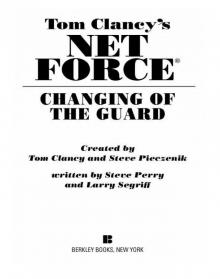 Changing of the Guard
Changing of the Guard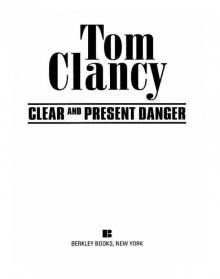 Clear and Present Danger
Clear and Present Danger Hounds of Rome
Hounds of Rome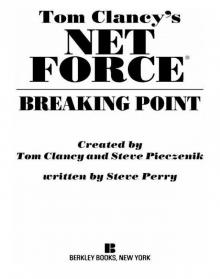 Breaking Point
Breaking Point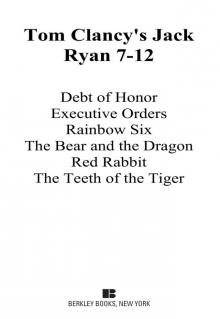 Tom Clancy's Jack Ryan Books 7-12
Tom Clancy's Jack Ryan Books 7-12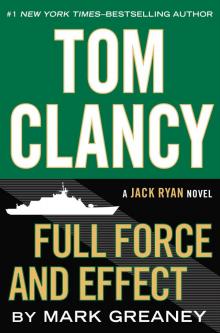 Full Force and Effect
Full Force and Effect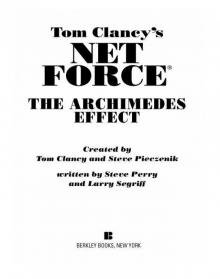 The Archimedes Effect
The Archimedes Effect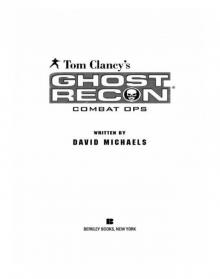 Combat Ops
Combat Ops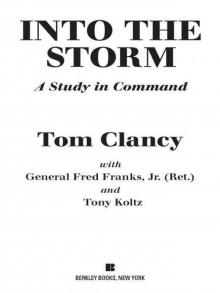 Into the Storm: On the Ground in Iraq
Into the Storm: On the Ground in Iraq Under Fire
Under Fire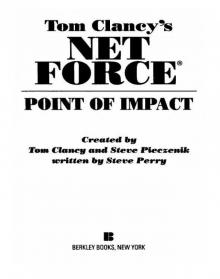 Point of Impact
Point of Impact Red Rabbit
Red Rabbit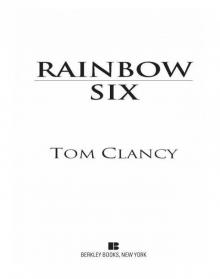 Rainbow Six
Rainbow Six The Hunt for Red October
The Hunt for Red October The Teeth of the Tiger
The Teeth of the Tiger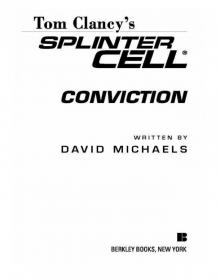 Conviction (2009)
Conviction (2009)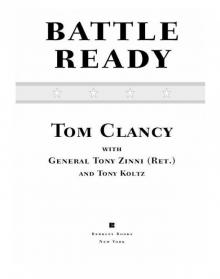 Battle Ready
Battle Ready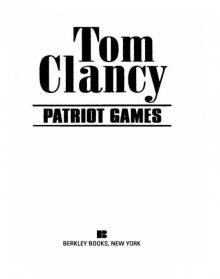 Patriot Games
Patriot Games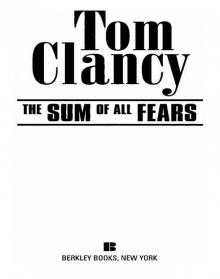 The Sum of All Fears
The Sum of All Fears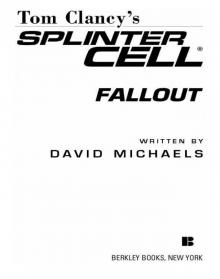 Fallout (2007)
Fallout (2007) Red Storm Rising
Red Storm Rising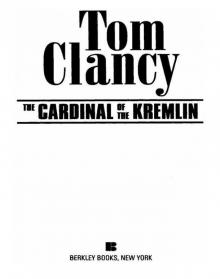 The Cardinal of the Kremlin
The Cardinal of the Kremlin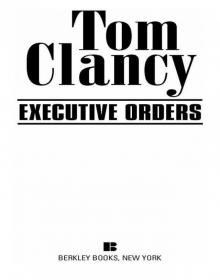 Executive Orders
Executive Orders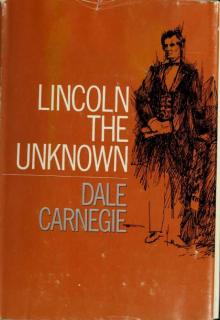 Lincoln, the unknown
Lincoln, the unknown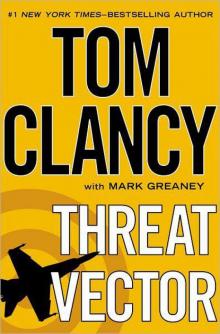 Threat Vector
Threat Vector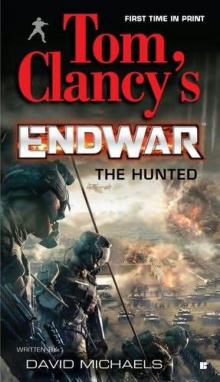 The Hunted
The Hunted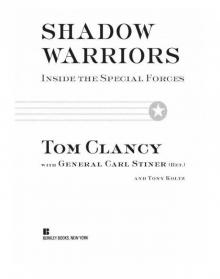 Shadow Warriors: Inside the Special Forces
Shadow Warriors: Inside the Special Forces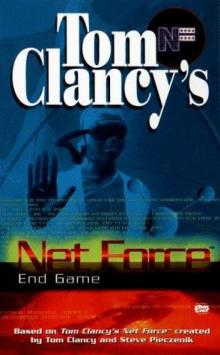 End Game
End Game Special Forces: A Guided Tour of U.S. Army Special Forces
Special Forces: A Guided Tour of U.S. Army Special Forces Locked On
Locked On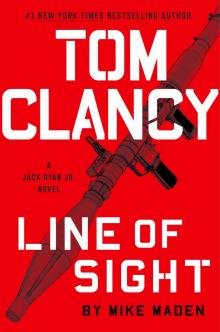 Line of Sight
Line of Sight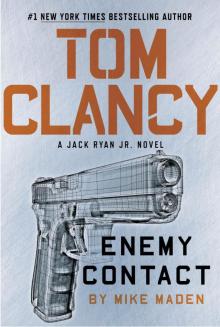 Tom Clancy Enemy Contact - Mike Maden
Tom Clancy Enemy Contact - Mike Maden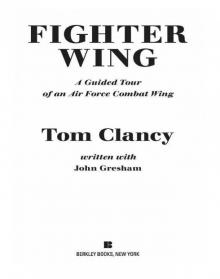 Fighter Wing: A Guided Tour of an Air Force Combat Wing
Fighter Wing: A Guided Tour of an Air Force Combat Wing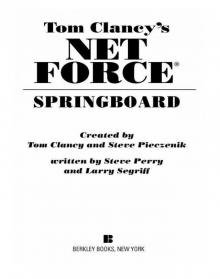 Springboard
Springboard Line of Sight - Mike Maden
Line of Sight - Mike Maden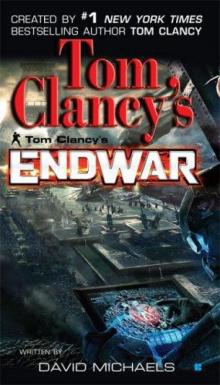 EndWar
EndWar Dead or Alive
Dead or Alive Tom Clancy Support and Defend
Tom Clancy Support and Defend Checkmate
Checkmate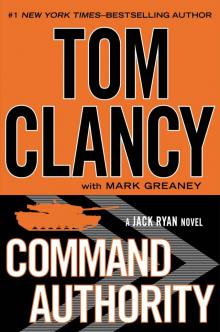 Command Authority
Command Authority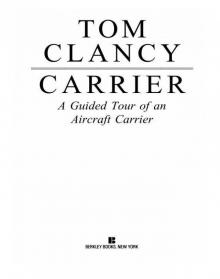 Carrier: A Guided Tour of an Aircraft Carrier
Carrier: A Guided Tour of an Aircraft Carrier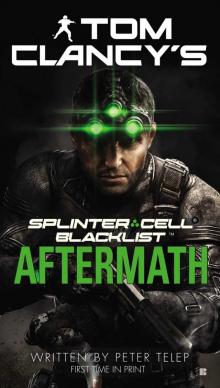 Blacklist Aftermath
Blacklist Aftermath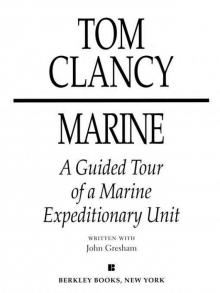 Marine: A Guided Tour of a Marine Expeditionary Unit
Marine: A Guided Tour of a Marine Expeditionary Unit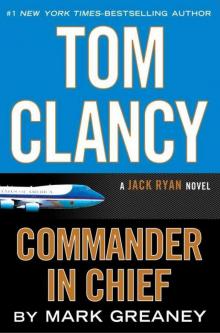 Commander-In-Chief
Commander-In-Chief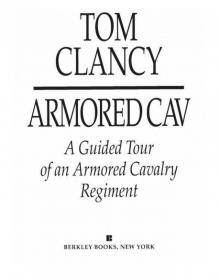 Armored Cav: A Guided Tour of an Armored Cavalry Regiment
Armored Cav: A Guided Tour of an Armored Cavalry Regiment Tom Clancy's Jack Ryan Books 1-6
Tom Clancy's Jack Ryan Books 1-6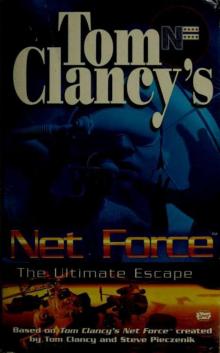 The Ultimate Escape
The Ultimate Escape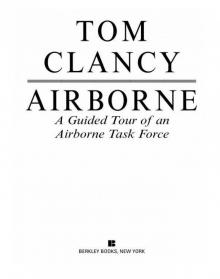 Airborne: A Guided Tour of an Airborne Task Force
Airborne: A Guided Tour of an Airborne Task Force Debt of Honor
Debt of Honor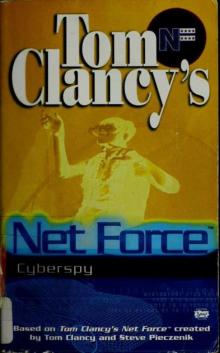 Cyberspy
Cyberspy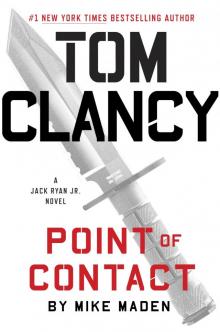 Point of Contact
Point of Contact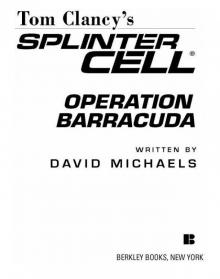 Operation Barracuda (2005)
Operation Barracuda (2005)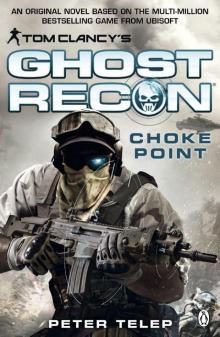 Choke Point
Choke Point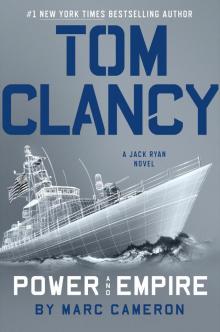 Power and Empire
Power and Empire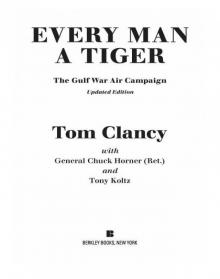 Every Man a Tiger: The Gulf War Air Campaign
Every Man a Tiger: The Gulf War Air Campaign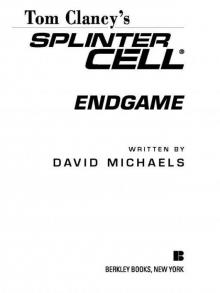 Endgame (1998)
Endgame (1998)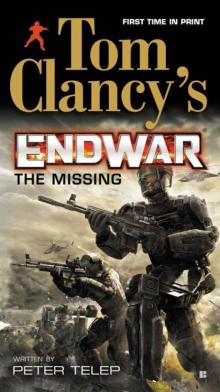 EndWar: The Missing
EndWar: The Missing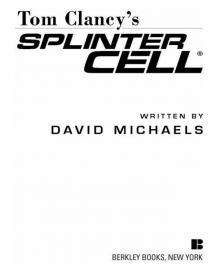 Splinter Cell (2004)
Splinter Cell (2004)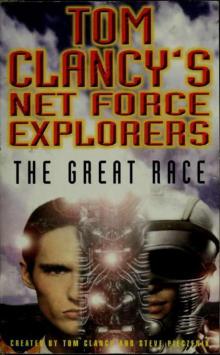 The Great Race
The Great Race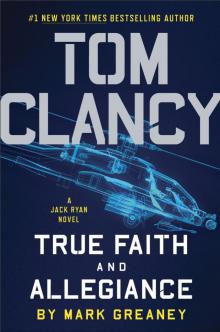 True Faith and Allegiance
True Faith and Allegiance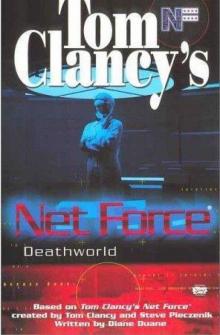 Deathworld
Deathworld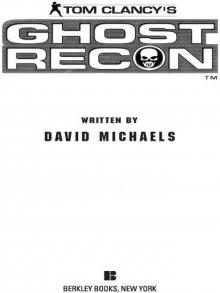 Ghost Recon (2008)
Ghost Recon (2008)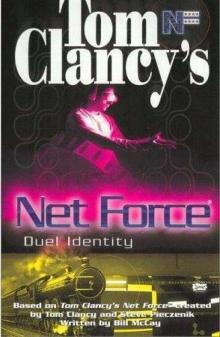 Duel Identity
Duel Identity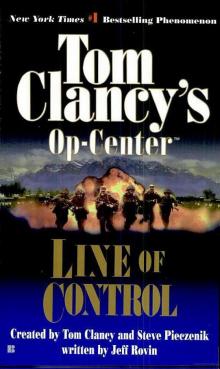 Line of Control o-8
Line of Control o-8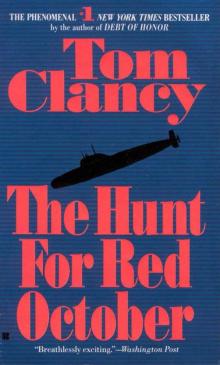 The Hunt for Red October jr-3
The Hunt for Red October jr-3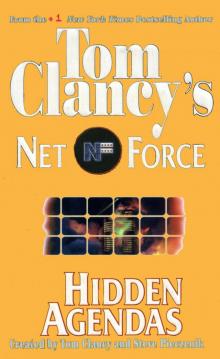 Hidden Agendas nf-2
Hidden Agendas nf-2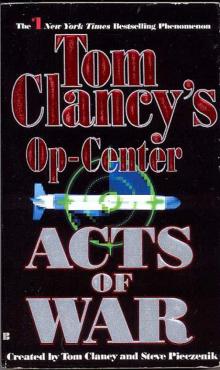 Acts of War oc-4
Acts of War oc-4 Ruthless.Com pp-2
Ruthless.Com pp-2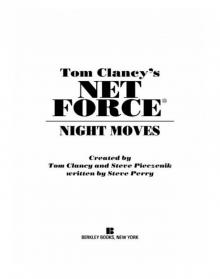 Night Moves
Night Moves The Hounds of Rome - Mystery of a Fugitive Priest
The Hounds of Rome - Mystery of a Fugitive Priest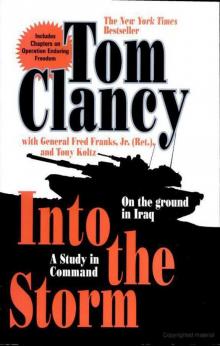 Into the Storm: On the Ground in Iraq sic-1
Into the Storm: On the Ground in Iraq sic-1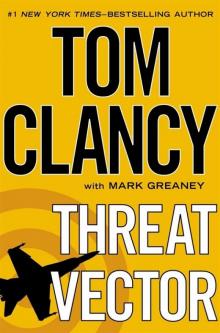 Threat Vector jrj-4
Threat Vector jrj-4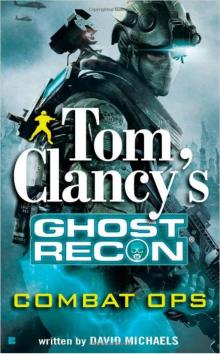 Combat Ops gr-2
Combat Ops gr-2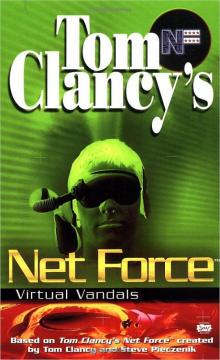 Virtual Vandals nfe-1
Virtual Vandals nfe-1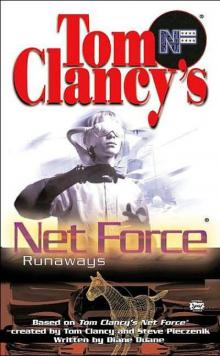 Runaways nfe-16
Runaways nfe-16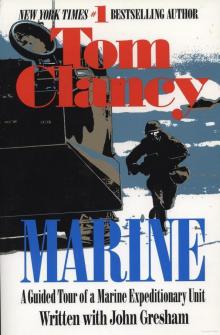 Marine: A Guided Tour of a Marine Expeditionary Unit tcml-4
Marine: A Guided Tour of a Marine Expeditionary Unit tcml-4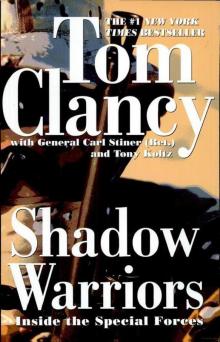 Shadow Warriors: Inside the Special Forces sic-3
Shadow Warriors: Inside the Special Forces sic-3 Jack Ryan Books 1-6
Jack Ryan Books 1-6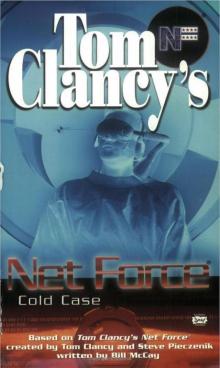 Cold Case nfe-15
Cold Case nfe-15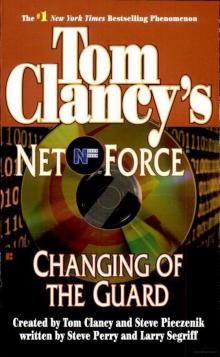 Changing of the Guard nf-8
Changing of the Guard nf-8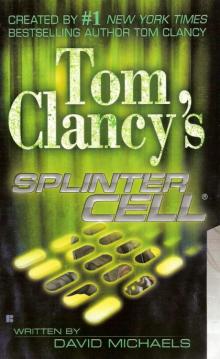 Splinter Cell sc-1
Splinter Cell sc-1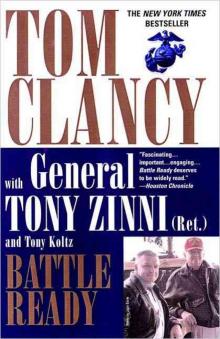 Battle Ready sic-4
Battle Ready sic-4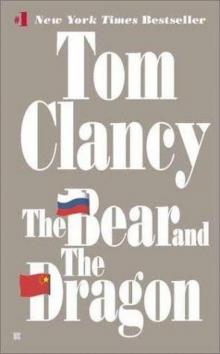 The Bear and the Dragon jrao-11
The Bear and the Dragon jrao-11 Fighter Wing: A Guided Tour of an Air Force Combat Wing tcml-3
Fighter Wing: A Guided Tour of an Air Force Combat Wing tcml-3 Patriot Games jr-1
Patriot Games jr-1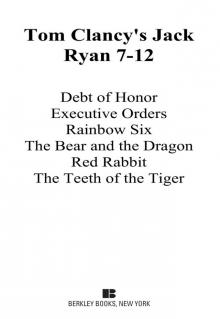 Jack Ryan Books 7-12
Jack Ryan Books 7-12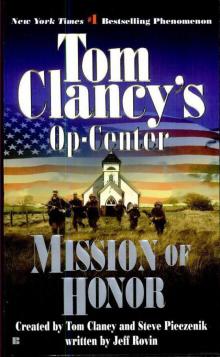 Mission of Honor o-9
Mission of Honor o-9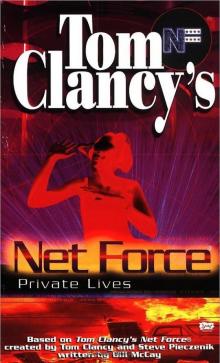 Private Lives nfe-9
Private Lives nfe-9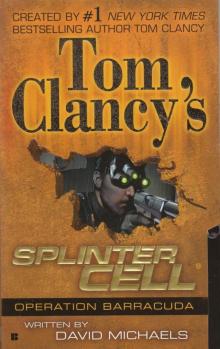 Operation Barracuda sc-2
Operation Barracuda sc-2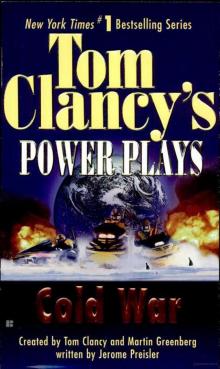 Cold War pp-5
Cold War pp-5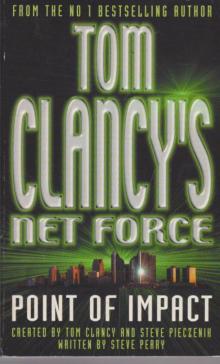 Point of Impact nf-5
Point of Impact nf-5 Red Rabbit jr-9
Red Rabbit jr-9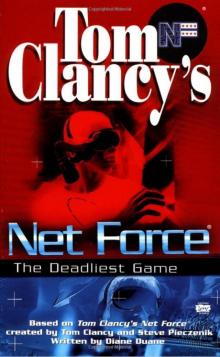 The Deadliest Game nfe-2
The Deadliest Game nfe-2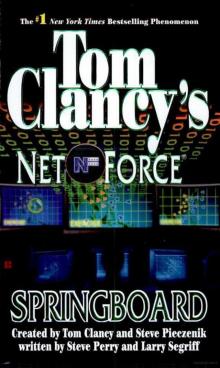 Springboard nf-9
Springboard nf-9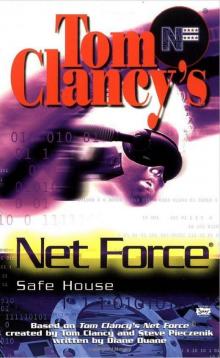 Safe House nfe-10
Safe House nfe-10 EndWar e-1
EndWar e-1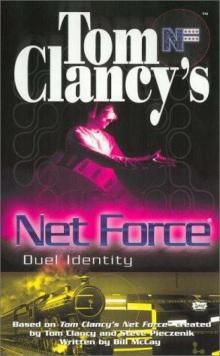 Duel Identity nfe-12
Duel Identity nfe-12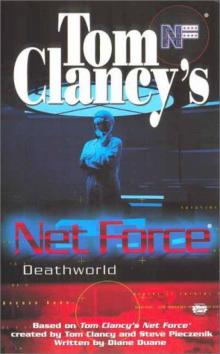 Deathworld nfe-13
Deathworld nfe-13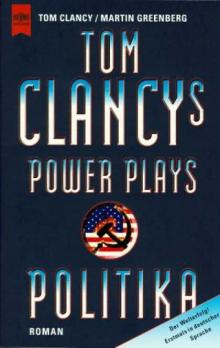 Politika pp-1
Politika pp-1 Rainbow Six jr-9
Rainbow Six jr-9 Tom Clancy's Power Plays 1 - 4
Tom Clancy's Power Plays 1 - 4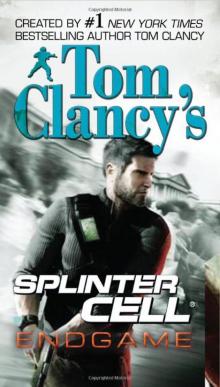 Endgame sc-6
Endgame sc-6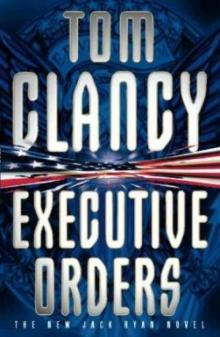 Executive Orders jr-7
Executive Orders jr-7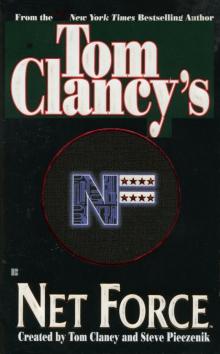 Net Force nf-1
Net Force nf-1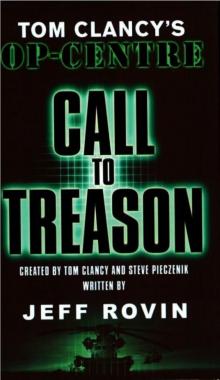 Call to Treason o-11
Call to Treason o-11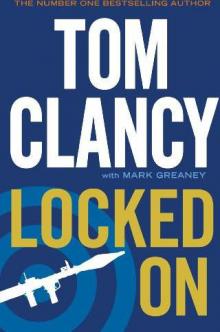 Locked On jrj-3
Locked On jrj-3 Against All Enemies
Against All Enemies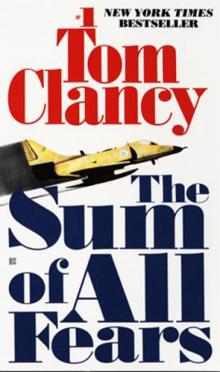 The Sum of All Fears jr-7
The Sum of All Fears jr-7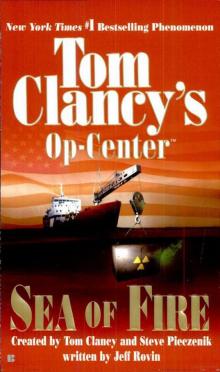 Sea of Fire o-10
Sea of Fire o-10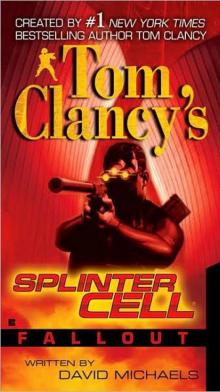 Fallout sc-4
Fallout sc-4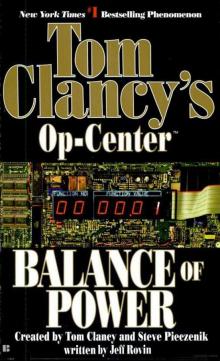 Balance of Power o-5
Balance of Power o-5 Shadow Watch pp-3
Shadow Watch pp-3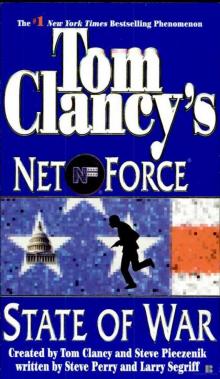 State of War nf-7
State of War nf-7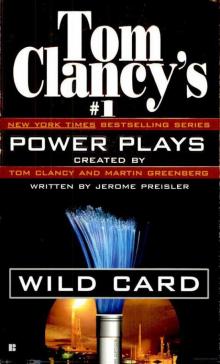 Wild Card pp-8
Wild Card pp-8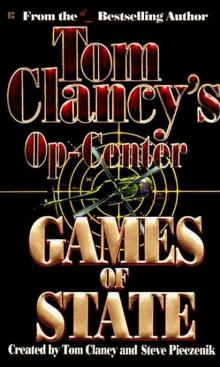 Games of State o-3
Games of State o-3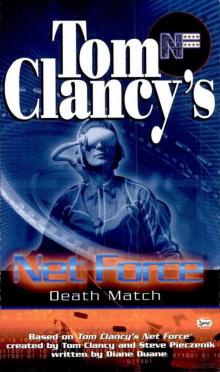 Death Match nfe-18
Death Match nfe-18 Against All Enemies mm-1
Against All Enemies mm-1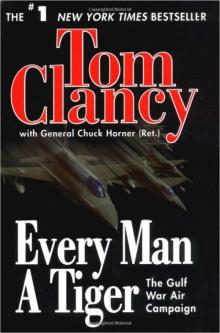 Every Man a Tiger: The Gulf War Air Campaign sic-2
Every Man a Tiger: The Gulf War Air Campaign sic-2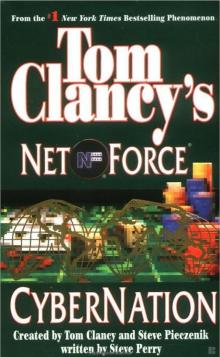 Cybernation nf-6
Cybernation nf-6 Support and Defend
Support and Defend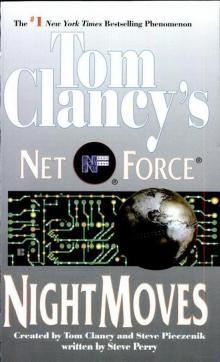 Night Moves nf-3
Night Moves nf-3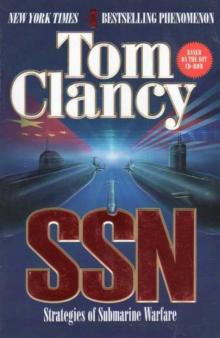 SSN
SSN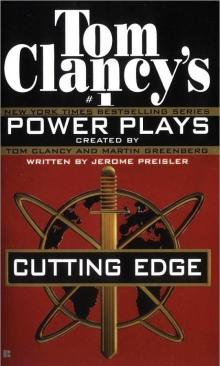 Cutting Edge pp-6
Cutting Edge pp-6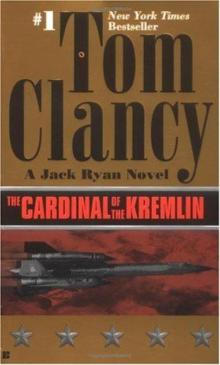 The Cardinal of the Kremlin jrao-5
The Cardinal of the Kremlin jrao-5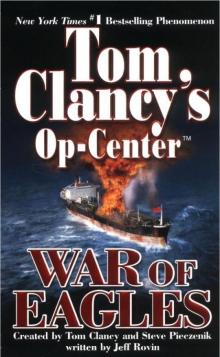 War of Eagles o-12
War of Eagles o-12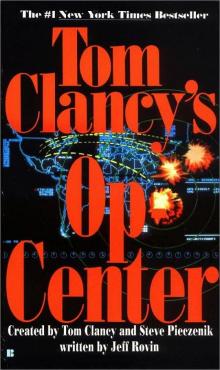 Op-Center o-1
Op-Center o-1 Mirror Image o-2
Mirror Image o-2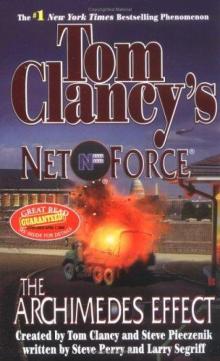 The Archimedes Effect nf-10
The Archimedes Effect nf-10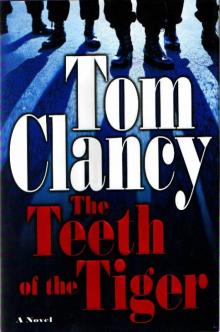 Teeth of the Tiger jrj-1
Teeth of the Tiger jrj-1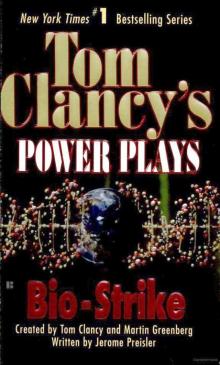 Bio-Strike pp-4
Bio-Strike pp-4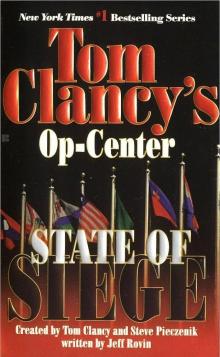 State of Siege o-6
State of Siege o-6 Debt of Honor jr-6
Debt of Honor jr-6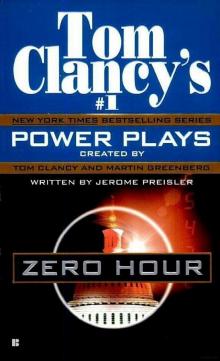 Zero Hour pp-7
Zero Hour pp-7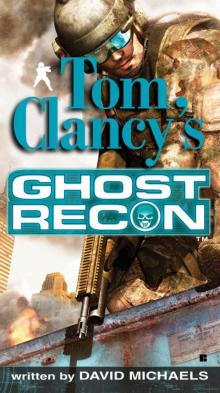 Ghost Recon gr-1
Ghost Recon gr-1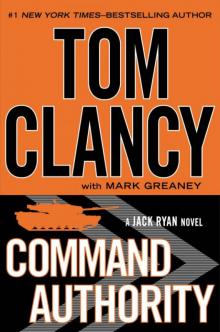 Command Authority jr-10
Command Authority jr-10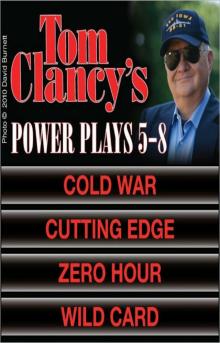 Tom Clancy's Power Plays 5 - 8
Tom Clancy's Power Plays 5 - 8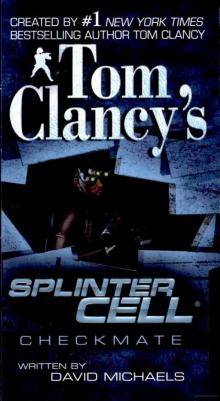 Checkmate sc-3
Checkmate sc-3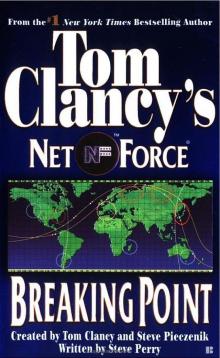 Breaking Point nf-4
Breaking Point nf-4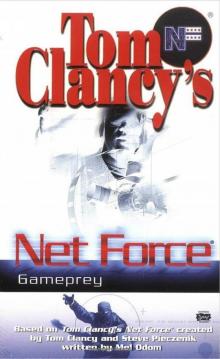 Gameprey nfe-11
Gameprey nfe-11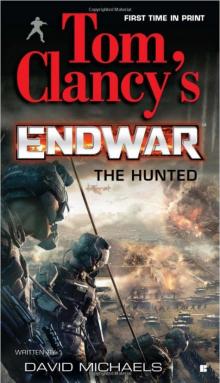 The Hunted e-2
The Hunted e-2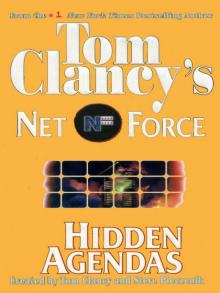 Hidden Agendas
Hidden Agendas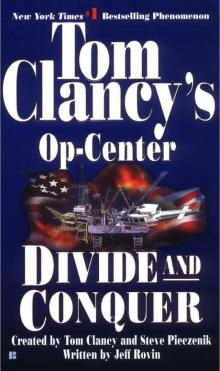 Divide and Conquer o-7
Divide and Conquer o-7